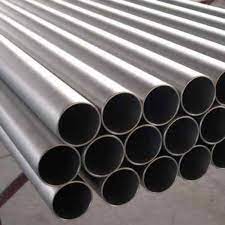304L stainless steel tubing is renowned for its exceptional strength, making it suitable for various applications. In this article, we will delve into the various aspects of the strength of stainless steel 304L tubes, including its mechanical properties, yield strength, tensile strength, and factors influencing its strength.
These SS 304L Tubes are a popular choice in various industries due to their strength, corrosion resistance, and versatility. The strength of stainless steel tubing is crucial when determining its suitability for specific applications. By understanding the mechanical properties and factors influencing the strength of 304L stainless steel tubing, we can appreciate its exceptional performance and wide range of uses.
Understand Stainless Steel 304L Tubes
304L stainless steel tubing is a low-carbon variation of the 304 stainless steel grade. The “L” in 304L stands for “low carbon,” indicating that it contains less carbon than standard 304 stainless steel. This lower carbon content offers several advantages, including improved weldability and resistance to sensitization, which can lead to intergranular corrosion.
The addition of alloying elements, such as chromium and nickel, contributes to the strength and corrosion resistance of 304L stainless steel tubing. The presence of these elements forms a protective oxide layer on the surface of the tubing, providing excellent resistance to corrosion in various environments.
Mechanical Properties of 304L Stainless Steel Tubing
The mechanical properties of 304L stainless steel tubing are vital indicators of its strength and performance. Here are some key mechanical properties:
- Yield Strength: Yield strength refers to the stress at which a material exhibits plastic deformation and permanent set. The typical yield strength for 304L stainless steel tubing is approximately 170 MPa (25,000 psi). This indicates the amount of stress the tubing can withstand before it matures.
- Tensile Strength: Tensile strength is the maximum stress a material can withstand before failure or fracture occurs. The tensile strength of 304L stainless steel tubing is approximately 485 MPa (70,000 psi). It demonstrates the tubing's ability to resist external forces without breaking or deforming.
- Elongation: Elongation measures the plastic deformation a material can undergo before it fractures. 304L stainless steel tubing typically exhibits an elongation of around 40%. This indicates its ability to stretch or elongate without breaking under tensile stress.
- Hardness: Hardness determines the material's resistance to indentation or scratching. The hardness of 304L stainless steel tubing ranges from 70 to 88 HRB (Rockwell B scale). A higher hardness value implies increased resistance to wear and abrasion.
Yield Strength
The yield strength of 304L stainless steel tubing is an essential mechanical property that indicates its ability to withstand stress without permanent deformation. With a typical yield strength of approximately 170 MPa (25,000 psi), 304L stainless steel tubing offers sufficient strength for various applications. The low carbon content in 304L stainless steel minimizes the risk of sensitization and subsequent intergranular corrosion, further enhancing its overall performance.
Tensile Strength
The tensile strength of 304L stainless steel tube reflects its resistance to external forces and the maximum stress it can withstand before failure. With a tensile strength of around 485 MPa (70,000 psi), the stainless steel 304l tube is known for its high strength and durability. This property makes it suitable for demanding applications that require resistance to heavy loads and mechanical stresses.
Factors Influencing the Strength of 304L Stainless Steel Tubing
Several factors can influence the strength of these tubes which include:
- Chemical composition: The alloying elements, such as chromium and nickel, significantly contribute to the strength and corrosion resistance of 304L stainless steel tubes. Higher amounts of these elements enhance the material's strength and overall performance.
- Heat treatment: Appropriate heat treatment processes, such as annealing or quenching, can optimize the strength and mechanical properties of the SS 304L Tube. Heat treatment helps refine the microstructure and remove residual stresses, resulting in improved strength and toughness.
- Fabrication techniques: The manufacturing processes used to produce stainless steel tubing, such as cold working or welding, can affect its strength. Careful control of these processes is crucial to avoid introducing defects or weakening the material.
- Dimensional factors: The dimensions and wall thickness of the tubing can influence its strength. Thicker walls generally provide higher strength and resistance to external forces.
Applications of 304L Stainless Steel Tubing
Due to its exceptional strength, these steel 304L tubes find applications in various industries, including:
- Chemical processing and petrochemical industries: Used in pipelines, heat exchangers, and pressure vessels.
- Food and beverage industry: Employed in processing equipment, storage tanks, and piping systems.
- Medical and pharmaceutical fields: Utilized for surgical instruments, medical devices, and laboratory equipment.
- Architectural and construction applications: Used for structural components, handrails, and decorative elements.
- Automotive industry: Applied in exhaust systems, fuel lines, and other automotive components.
In conclusion, strength plays a vital role in determining its performance and suitability for different applications. Its excellent mechanical properties, including yield and tensile strength, enable it to withstand external forces and maintain its structural integrity. By understanding the factors influencing its strength and its wide range of applications, we can appreciate the significance of stainless steel 304L tubes in various industries.







